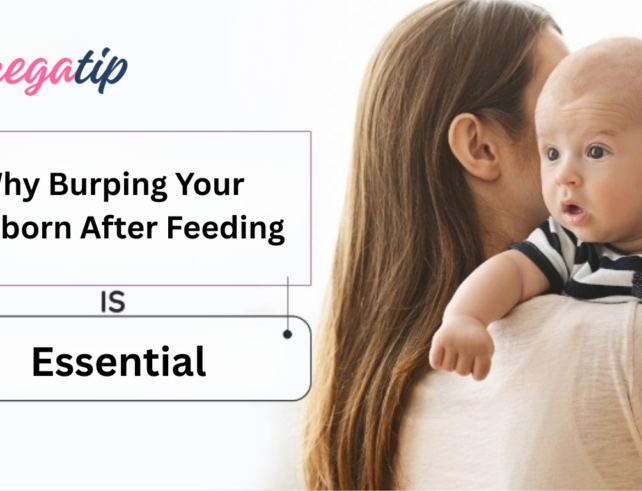Building Trust And Security In Toddlers: Nurturing Well-being


Building trust and security in toddlers is an important aspect of parenting that shapes their emotional well-being and future relationships. In this article, we will explore the importance of trust and security in toddlerhood. We will also discuss the strategies for building these qualities, and the lifelong impact of a secure early attachment.
Building trust and security in toddlers is a critical aspect of their emotional development. It lays the foundation for healthy relationships and a strong sense of self. At this stage, toddlers explore their environment with a newfound sense of independence yet rely heavily on their caregivers for support and reassurance. Establishing a stable and trustworthy relationship with toddlers involves consistent responses to their needs. It also helps in clear and age-appropriate communication, and a safe and nurturing environment that allows them to thrive. This article will explore the various strategies and practices that parents can employ to build a sense of trust in their toddlers. This will ultimately contribute to their overall well-being and happiness.
1. Trust and Security Defined
Building trust and security in toddlers involves creating an environment where they feel safe, loved, and supported. Trust refers to the belief that their needs will be met, while security guarantees safety and emotional well-being.
a. The Significance of Early Attachment
The foundation of trust and security is established in infancy and continues through toddlerhood. A secure attachment with caregivers provides the basis for emotional resilience and healthy relationships in the future.
2. Fostering Trust and Security in Toddlers
Parents and caregivers play an important role in nurturing trust and security in toddlers. Understanding the strategies and principles involved is essential for creating a loving and secure environment.
a. Responsive Parenting
- Emotional Availability: Being emotionally available means responding quickly to a toddler’s needs and emotions. It involves validating their feelings and offering comfort when required.
- Consistent Caregiving: Consistency in routines and caregiving routines provides a sense of predictability and stability, building trust.
b. Building a Safe Environment
- Physical Safety: Ensuring a safe physical environment is crucial for a toddler’s well-being, reducing the risk of accidents and promoting security.
- Emotional Safety: Encourage open communication and create an atmosphere where toddlers feel safe expressing their emotions, building emotional security.
3. Positive Parent-Child Interactions
Quality interactions between parents and toddlers are key to building trust and security.
a. Attachment Play
- Emotion-Focused Play: Engaging in play that focuses on emotions and connection, such as peek-a-boo, helps toddlers build trust and security.
- Eye Contact and Smiles: Positive non-verbal cues, like eye contact and smiles, are vital for building a strong parent-child bond.
b. Active Listening
- Validation: Listening to toddlers’ feelings and experiences validates their emotions and shows that their voice matters.
- Empathy: Demonstrating empathy by acknowledging a toddler’s perspective nurtures trust and security.
4. Establishing Routines and Boundaries
Toddlers thrive in structured environments with clear boundaries.
a. Consistent Routines
- Predictable Schedules: Establish daily routines that toddlers can anticipate, providing them a sense of security.
- Bedtime Rituals: Bedtime routines, like reading a story or singing a lullaby, help toddlers transition to sleep with comfort and trust.
b. Gentle Discipline
- Effective Communication: Use clear and gentle communication when setting boundaries and explaining rules to build trust.
- Positive Reinforcement: Reward good behaviour with praise and positive reinforcement, encouraging a toddler’s sense of security in their choices.
5. Recognizing and Addressing Separation Anxiety
Separation anxiety is a common occurrence in toddlerhood that can impact trust and security.
a. Acknowledging Emotions
- Normal Development: Understanding that separation anxiety is a normal part of toddler development helps parents approach it with empathy and patience.
- Preparation: Prepare toddlers for separations by explaining where parents are going and when they will return, easing their anxiety.
b. Gradual Transitions
- Transitional Objects: Introduce transitional objects like a favourite toy or comfort item to provide comfort during brief separations.
- Short and Positive Separations: Gradually increase the length of separations while ensuring they are positive and brief, building trust in the return.
6. The Lifelong Impact of a Secure Attachment
A secure attachment in toddlerhood has far-reaching effects on a child’s emotional well-being and relationships.
a. Emotional Resilience
- Confidence: A secure attachment fosters confidence in a toddler, enabling them to explore the world with trust in their caregivers.
- Healthy Coping Skills: Toddlers with a secure attachment learn healthy coping mechanisms and problem-solving skills from their caregivers.
b. Positive Relationships
- Trust in Others: A secure attachment encourages trust in others, forming the basis of future healthy relationships.
- Empathy and Compassion: Toddlers who experience empathy and compassion from their caregivers are likelier to exhibit these qualities in their relationships.
Building trust and security in toddlers is a foundational element of parenting. It shapes a child’s emotional well-being and future relationships. The strategies discussed in this guide, such as responsive parenting, positive interactions, routines, and recognition of separation anxiety, are essential for building a secure attachment. The lifelong impact of a secure attachment includes emotional resilience and the development of healthy, positive relationships. This also makes it a fundamental aspect of nurturing a well-adjusted and confident individual.



